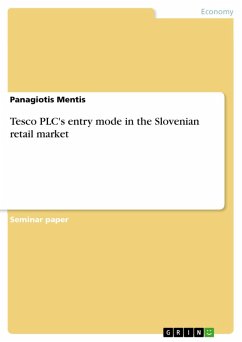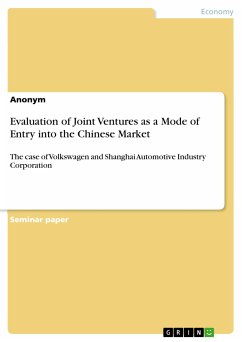Seminar paper from the year 2012 in the subject Business economics - Business Management, Corporate Governance, grade: 1,3, Leeds Metropolitan University, course: Management of International Business, language: English, abstract: This paper examines Tesco PLC's entry in the Slovenian retail market. When evaluating the positives and negatives, the greenfield strategy is seemingly more risky due to cost and time constraints compared to acquisition. The most suitable strategy for a large company to enter Slovenia's trade would be to usurp a current retailer, due to it being a relatively small country. Using acquired knowledge of customer and consumer habits in foreign countries facilitates entering Slovenian retail. Moreover, Tesco PLC has the required assets for expanding and continuing Tesco's multinational strategy. Slovenia is an attractive opportunity for foreign companies to put investment into, as the risk factor is low because of steady governmental regulations and stability within the economy. The country owns a fast growing IT sector which is an advantage and opportunity for Tesco PLC regarding its e-commerce, in addition to the sporadic increase of internet users. Slovenia has had constant GDP growth rates of 3.5 %, which indicates stability in economic growth.
Dieser Download kann aus rechtlichen Gründen nur mit Rechnungsadresse in A, B, BG, CY, CZ, D, DK, EW, E, FIN, F, GR, HR, H, IRL, I, LT, L, LR, M, NL, PL, P, R, S, SLO, SK ausgeliefert werden.









